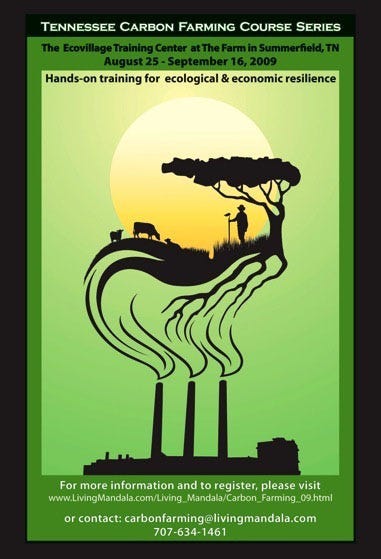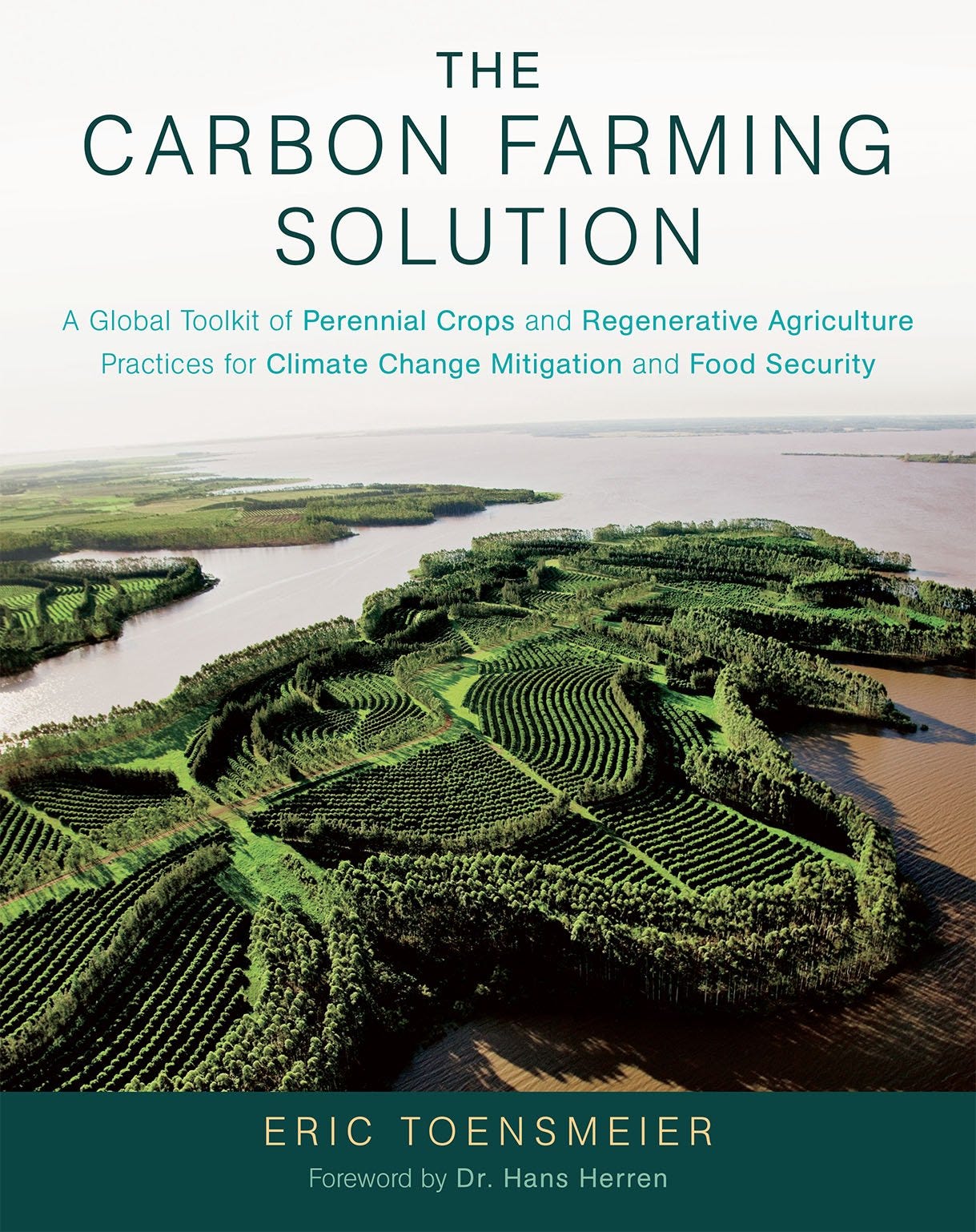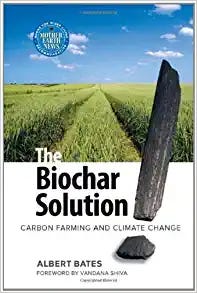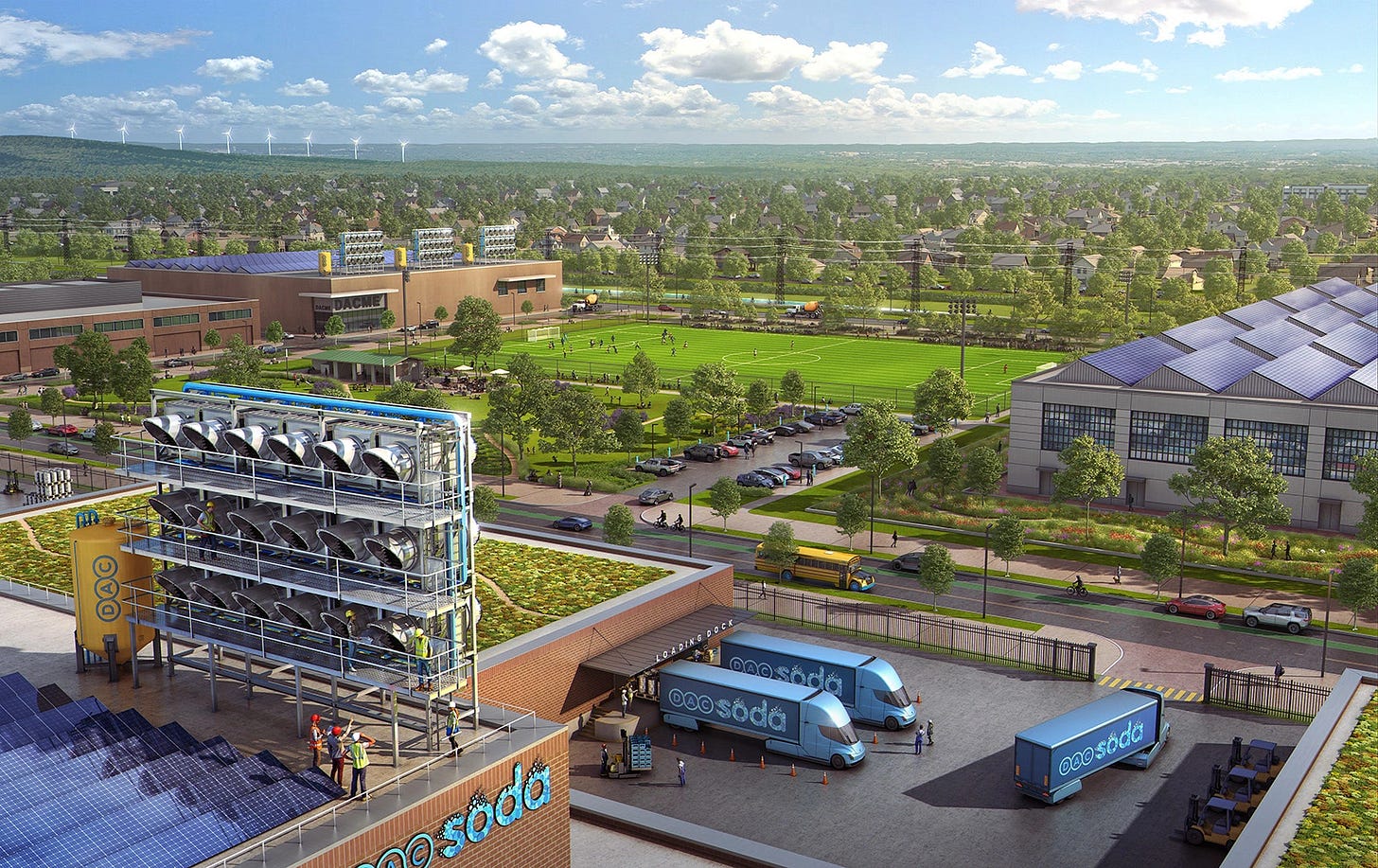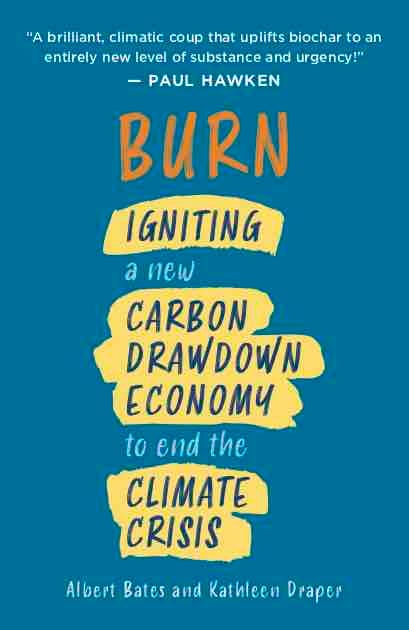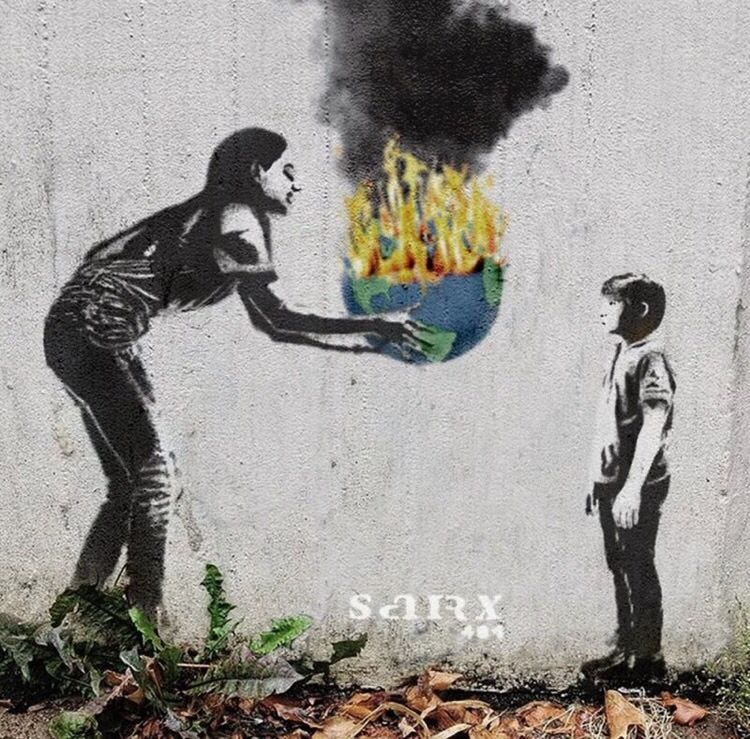[Deadline Approaching] We can't let climate catastrophe define our future
and other perils of publishing in the Age of Consequences
I recently got sucked into reading a Climate Reality mass email blast with the subject line: [Deadline Approaching] We can’t let climate catastrophe define our future.
It turned out the “deadline” was “Please, will you rush your gift before our March 31 deadline to help hit our end-of-quarter goal and power the fight for a safe and sustainable future?”
Parsing the clickbait a little closer, one needs to ask why Climate Reality would imagine that the climate catastrophe won’t define our future, or that it is within human agency to prevent that now. Climate Reality stumbled not once, but twice, in crafting this unappealing appeal. They lied to their donors about a deadline, which was manufactured in the same way and for the same reason Exxon-Mobile conjures up its quarterly goals, and they premised that lie on the false hope of something that so utterly impossible it is destined to be dashed.
Mark you, I am not against fundraising. I have my begging bowl out the same as most of us working to reverse climate change. For a quarter century, my main way to fundraise was by educating, as Climate Reality does. In 2009, we ran a carbon farming course at The Farm Ecovillage Training Center. It was a prototype for a workshop idea we hoped would catch on and spread to other training centers like ours.
Each module was about $1000 — you had to be serious to want this — and lasted 4 to 6 days, with food and lodging included:
Holistic Management with Kirk Gadzia (in association with Alan Savory),
Keyline Design with Darren Doherty (an apprentice to PA Yeomans and Bill Mollison),
Regenerative Earthworks & Food Forestry with Brad Lancaster & Eric Toensmeier, and
Soil Food Web, CDR, and Pathways to Relocalization with myself, Dr. Elaine Ingham & Joel Salatin.
Over the course of the original 3 weeks, we assembled a keyline plow, brewed 1000-gallon batches of compost teas, and plowed, inoculated and biochar-amended a few acres of The Farm’s horse pastures after laying a grid with GPS laser transits .The course was indeed as seminal as we had hoped, and the following year I and others captured parts of it in magazine stories and New Society published my book, The Biochar Solution: Carbon Farming and Climate Change. The hands-on pedagogy was much more enduring for those who attended in person. Eric Toensmeier also took a deep dive with his $70 opus ($55 on Kindle), The Carbon Farming Solution (2016).
We eventually went on to keyline much more of The Farm with Darren, design and plant food forests on contour with David Jacke, and mass-produce biochar from bamboo, as we will be doing again this summer.
The IPCC Synthesis Report for the 6th Assessment is now out. To paraphrase Katharine Hayhoe’s summary:
Climate change is impacting every aspect of life on earth, from our food and water to the viability of the many species that perform functions that allow humans to survive.
We are not doing nearly enough to avoid dangerous impacts, let alone achieve the targets of the Paris Agreement.
Choices matter, and the faster we act, the better off we will all be. Every bit of warming matters. The warmer the planet gets, the more widespread and pronounced the changes in both average climate and climate and weather extremes become. Some repairs will take tens of thousands of years if they are possible at all. The impacts on future generations depend on the choices we make now.
Many of the solutions are already at hand. The barriers are not technical but personal, social, and behavioral.
One of the important underscores, repeating what IPCC has said for a decade or more, is that while human lives are measured in decades, carbon dioxide emitted today will live on for millennia in the atmosphere. Thanks to ocean absorption and other factors, the heating that happens from thickening our greenhouse duvet has a time lag of a few decades so we have yet to feel the full effects from emissions released before 2000. But we will, and our children will still more.
The only way out, the IPCC repeated, is to go beyond emissions reductions or net zero. We have to withdraw greenhouse gases that are already up there. The good news is that, like our 2009 workshop showed, a lot of people are interested in this. Their numbers are growing.
To date, there are six options for augmenting carbon sinks:
* Afforestation/ Reforestation
* Build-up of soil organic matter, such as by holistic grazing
* Enhanced weathering
* BECCS (Bioenergy with Carbon Capture and Storage)
* DACCS (Direct Air Carbon Capture and Sequestration), and
* Biochar
The Biochar Solution
Unlike the others, biochar is a product, not a process. But biochar is only one product of pyrolysis (the others being pyroligneous compounds, heat and electricity).
Not all produced biochar removes carbon effectively and permanently from the atmosphere. This is why standards have been developed. The sector is still in its infancy, so expect a virtuous, iterative cycle of improvements.
Recently a new acronym has emerged within the CDR (Carbon Dioxide Removal) domain, as if we needed yet another. BCR will henceforth stand for Biochar Carbon Removal. It should be distinguished from BECCS, which could include dreadful Drax boilers feeding off ecologically disastrous monocultures of GMO tree plantations outfitted with coal-plant-like scrubbers or shiny DAC machines to concentrate the CO2 effluent (with energy), liquify it (with energy), and pump it deep underground (with energy) hoping it won’t leak back to the surface on meaningful time scales. BCR should also be distinguished from BiCRS (pronounced “bikers”) which is Biomass Carbon Removal and Storage that includes BECCS and BCR but also timber-frame and strawbale buildings, ash-cretes, hemp-crates, and wicker furniture.
Biochar Carbon Removal tries to avoid technical jargon like “pyrogenic” (PyCCS) or using an abbreviation containing CCS that connotes an energetic, rare earths, chemical process of extracting CO2 from other gases and storing that in geological formations, something coal plants have been required to do but have found both too expensive and technologically immature to implement. CCU (Carbon Capture and Use) is a slight variation, typically involving large commercial greenhouses or beverage carbonating factories that I have fondly been calling “catch and release,” as in sportsfishing. Is BCR an improvement that clarifies, or just another confusing acronym?
There is no deadline approaching. It passed us by decades ago. Getting to zero emissions, or the less demanding “net zero,” is no longer enough, as the latest IPCC report made abundantly clear. We need to go beyond zero.
The Biden Administration, feeding the hungry engineers at US national laboratories, bet the infrastructure farm on DACCS, to the tune of tens of billions in R&D. Apart from a few locations like Iceland, with abundant geothermal energy, dense concentrations of volcanic CO2 to draw from, and fresh, unweathered basalts to bind liquified CO2 to, DACCS is a non-starter for any number of reasons but foremost is the energy requirement. Removing a gigaton per year — just 2% of what is needed to go beyond zero — would take a third to half of all the electric power presently generated worldwide, at a time when we are trying to retire fossil energy plants.
Biochar, by contrast, earns money for its producers and users, can be made by anyone, improves the health of mixed-age, mixed species forest ecologies, solves a number of CO2 source problems (fugitive woody wastes, sewage off-gassing, and algal or seaweed blooms) and has tens of gigatons of carbon drawdown potential just by itself, while producing heat and power.
Should be a no-brainer. It is, for the major traders in carbon, who last year made biochar the number one delivered carbon removal credit sold worldwide.
According to CDR.fyi, nearly all the roughly 65,000 tCO2e that have been removed from the atmosphere in 2022 have been sequestered using this method. Currently, the CDR market is primarily dominated by pre-purchases and offtake agreements. However, BCR, along with bio-oil and enhanced rock weathering, represents an exception to this. Credits from these projects are one of the few CDR credits that companies can purchase and retire in the short term on an ex-post basis, instead of waiting for delivery many years into the future. According to CDR.fyi data, BCR orders are typically fulfilled within about 5 months of purchase, which is significantly faster than other methods that take an average of 30–58 months.
While biochar is an emerging industry in North America and Europe — there are about 170 biochar producers in the USA and that number is expected to reach 200 before the end of 2023 — China is already a decade ahead and the gap is widening. I attended the inauguration of the Asian Biochar Research Center near Nanjing in 2016. At that time they had moved from the laboratory to two prototype facilities with constant process rotary kilns producing 32,000 tons of biochar per year and converting volatile off-gases into chemical feedstocks. They planned 5 more the following year, 25 after that, and 200 more by 2020. I suspect the pandemic lockdowns may have slowed them a little, but once you put socialist 5-year plans like that into action, very little can stop them.
The placement of these facilities was also strategic, centering them hub-and-spoke landscapes to reduce the transportation of waste feedstocks and finished fertilizers and boost rural employment. I saw the construction and settlement of the largest “ecovillages” (their term) I have ever seen, to service this transition, as vast areas were restored from cropland to both traditional and new agroforestry and aquaponic practices as well as “carbon farming” traditional grains and legumes. Those moving into these self-sustaining ecoregions were delighted with what they found, busily starting home gardens and having nightly street parties because village designs were entirely car-free.
In a study published last month in Nature Food, researchers concluded:
Our analysis shows that only the combination of the integrated pyrolysis and energy system and different management methods can ensure carbon-neutral production of staple crops in China. In addition, this method can help reduce nitrate leaching into the aquatic environment and reduce emissions of air pollutants such as sulfur dioxide, that can cause acidic rain. And there is the added benefit of increasing yields too.
Therefore, we conclude that this method can bring China, and perhaps other countries too, one step closer to the national goal of carbon neutrality and environmental sustainability in agriculture in 2060.
Which is not to say Europe and the US are not playing vigorous catch-up. I am teaching a virtual ecovillage design course on broad-scale soil processes in May, a masterclass in biochar and climate at the first Biochar Academy in New York in June. The European Commission’s Expert Group is meeting on carbon farming methodologies 21–22 June, followed by meetings on industrial removals and the certification process. By August my ecovillage hopes to be well along with our demonstration of paving the first mile of road in North America with an asphalt substitute made from biochar, which should be as groundbreaking (no pun intended) as our first carbon farming course.
Looking back to 2009, I would say our strategy seems to be working out better than Climate Reality’s. If you have been reading these posts regularly, chances are you have been thinking that too.
References:
Bates, Albert K., The Biochar Solution: Carbon Farming and Climate Change. New Society Publishers, 2010.
__ and Kathleen Draper, Burn: Using Fire to Cool the Earth. Chelsea Green Publishing, 2019.
Extavour, M., Finding signal in the noise: reflections from the world of climate and energy solutions. Medium, Mar 22, 2023.
Longlong Xia et al, Integrated biochar solutions can achieve carbon-neutral staple crop production, Nature Food (2023). DOI: 10.1038/s43016–023–00694–0
Toensmeier, Eric. The Carbon Farming Solution: A global toolkit of perennial crops and regenerative agriculture practices for climate change mitigation and food security. Chelsea Green Publishing, 2016.
Meanwhile, let’s end this war. Towns, villages, and cities in Ukraine are being bombed every day. Ecovillages and permaculture farms have organized something like an underground railroad to shelter families fleeing the cities, either on a long-term basis or temporarily, as people wait for the best moments to cross the border to a safer place, or to return to their homes if that becomes possible. There are still 70 sites in Ukraine and 500 around the region. They are calling their project “The Green Road.”
The Green Road is helping these places to grow food and to erect greenhouses, and raising money to acquire farm machinery and seed. The opportunity, however, is larger than that. The majority of the migrants are children. This will be the first experience in ecovillage living for most. They will directly experience its wonders, skills, and safety. They may never want to go back. Those that do will carry the seeds within them of the better world they glimpsed through the eyes of a child.
Those wishing to make a tax-deductible gift can do so through Global Village Institute by going to http://PayPal.me/greenroad2022 or by directing donations to greenroad@thefarm.org.
There is more info on the Global Village Institute website at https://www.gvix.org/greenroad and read this new article in Mother Jones.
The COVID-19 pandemic destroyed lives, livelihoods, and economies. But it has not slowed climate change, a juggernaut threat to all life, humans included. We had a trial run at emergency problem-solving on a global scale with COVID — and we failed. 6.87 million people, and counting, have died. We ignored well-laid plans to isolate and contact trace early cases; overloaded our ICUs; parked morgue trucks on the streets; incinerated bodies until the smoke obscured our cities as much as the raging wildfires. The modern world took a masterclass in how abysmally, unbelievably, shockingly bad we could fail, despite our amazing science, vast wealth, and singular talents as a species.
Having failed so dramatically, so convincingly, with such breathtaking ineptitude, do we imagine we will now do better with climate? Having demonstrated such extreme disorientation in the face of a few simple strands of RNA, do we imagine we can call upon some magic power that will change all that for planetary-ecosystem-destroying climate change?
As the world emerges into pandemic recovery (maybe), there is growing recognition that we must learn to do better. We must chart a pathway to a new carbon economy that goes beyond zero emissions and runs the industrial carbon cycle backward — taking CO2 from the atmosphere and ocean, turning it into coal and oil, and burying it in the ground. The triple bottom line of this new economy is antifragility, regeneration, and resilience. We must lead by good examples; carrots, not sticks; ecovillages, not carbon indulgences. We must attract a broad swath of people to this work by honoring it, rewarding it, and making it fun. That is our challenge now.
Help me get my blog posted every week. All Patreon donations and Blogger or Substack subscriptions are needed and welcomed. You are how we make this happen. Your contributions are being made to Global Village Institute, a tax-deductible 501(c)(3) charity. PowerUp! donors on Patreon get an autographed book off each first press run. Please help if you can.
#RestorationGeneration
Thank you for reading The Great Change.






